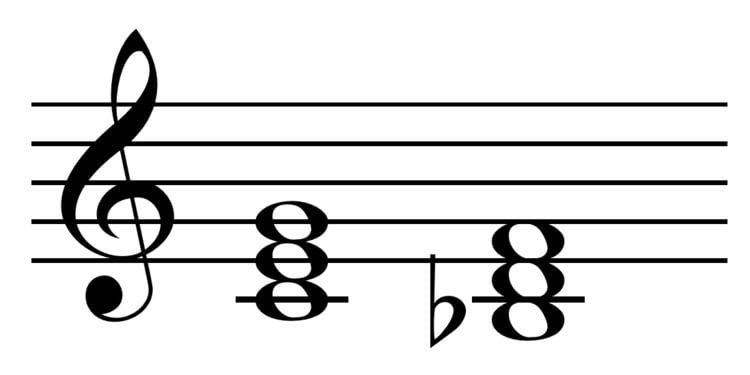 | ||
In music, the subtonic is the scale degree below the tonic or, more specifically, the flattened seventh (♭VII): the lowered or minor seventh degree of the scale, a whole step below the tonic, as opposed to the leading tone, which is only a half step below the tonic. The distinction between leading tone and subtonic has been made by theorists since at least the second quarter of the 20th century.
The subtonic appears in three forms: as the scale degree, ♭
For example, in the A minor scale (white keys on a piano, starting on A), the subtonic is the note G (in C major this would be B♭); and the subtonic triad consists of the notes G, B, and D (in C: B♭-D-F). In music theory, the subtonic chord is symbolized with the Roman numeral ♭VII for a major triad built on the note, or ♭vii for a minor triad; in a minor key, the flat symbol is sometimes omitted by some theorists because the subtonic note appears in the natural minor scale, but the flat symbol is usually used for the major scale because the subtonic is a non-scale note. Allen Forte describes the subtonic VII as "sounding like the V in the key of the relative major—that is, a V of III."
In jazz, the flattened seventh is also used as a substitute for the dominant, V, especially in the Backdoor cadence, ii-♭VII7-I, where the subtonic is used for the dominant seventh. ♭VII is in this case a pivot chord borrowed from the parallel minor (its dominant seventh). V7 and ♭VII7, the subtonic seventh chord, have two common tones, in C: GBDF and B♭DFA♭.
However, while, "the leading-tone/tonic relationship is axiomatic to the definition of common practice tonality," especially cadences and modulations, in popular music and rock a diatonic scalic leading tone (i.e., ♮
